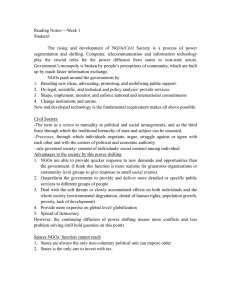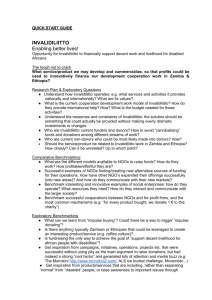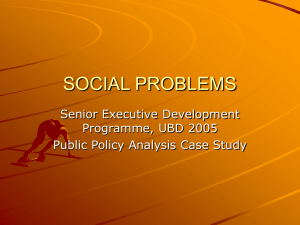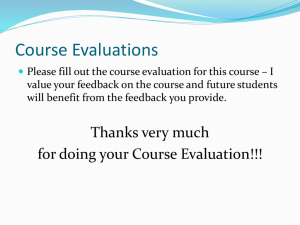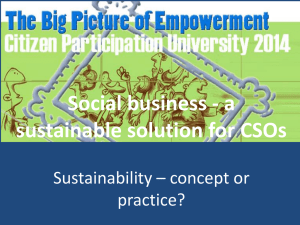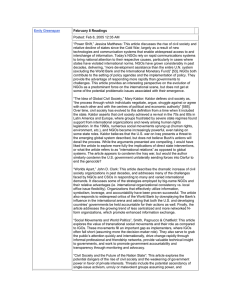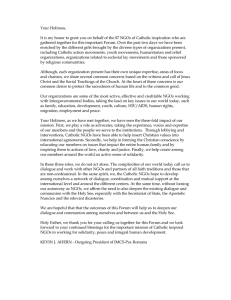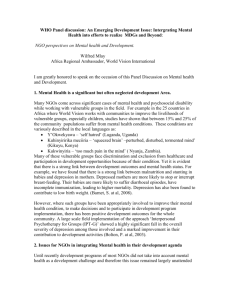SUMMARY OF RESULTS – Type of Body
advertisement
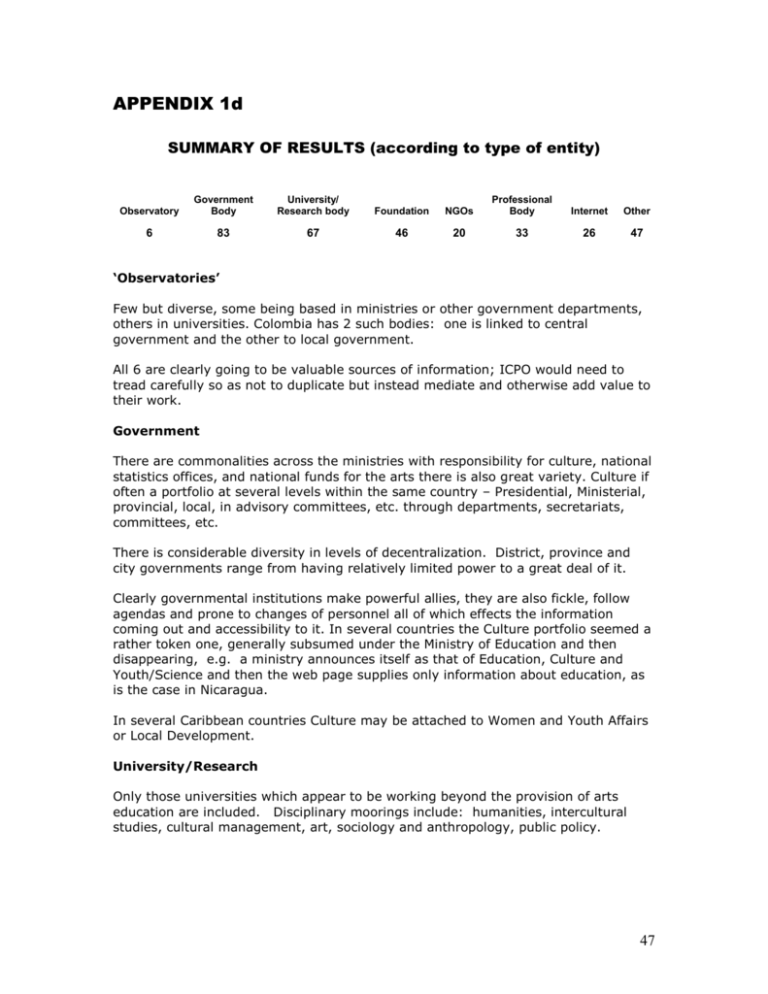
APPENDIX 1d SUMMARY OF RESULTS (according to type of entity) Observatory Government Body University/ Research body Foundation NGOs Professional Body Internet Other 6 83 67 46 20 33 26 47 ‘Observatories’ Few but diverse, some being based in ministries or other government departments, others in universities. Colombia has 2 such bodies: one is linked to central government and the other to local government. All 6 are clearly going to be valuable sources of information; ICPO would need to tread carefully so as not to duplicate but instead mediate and otherwise add value to their work. Government There are commonalities across the ministries with responsibility for culture, national statistics offices, and national funds for the arts there is also great variety. Culture if often a portfolio at several levels within the same country – Presidential, Ministerial, provincial, local, in advisory committees, etc. through departments, secretariats, committees, etc. There is considerable diversity in levels of decentralization. District, province and city governments range from having relatively limited power to a great deal of it. Clearly governmental institutions make powerful allies, they are also fickle, follow agendas and prone to changes of personnel all of which effects the information coming out and accessibility to it. In several countries the Culture portfolio seemed a rather token one, generally subsumed under the Ministry of Education and then disappearing, e.g. a ministry announces itself as that of Education, Culture and Youth/Science and then the web page supplies only information about education, as is the case in Nicaragua. In several Caribbean countries Culture may be attached to Women and Youth Affairs or Local Development. University/Research Only those universities which appear to be working beyond the provision of arts education are included. Disciplinary moorings include: humanities, intercultural studies, cultural management, art, sociology and anthropology, public policy. 47 Foundations These are particularly difficult to evaluate long distance in terms of their links, backing, in order to determine who is behind them and why. They seem to occur most strongly in countries that have less NGOs working in arts and culture. Some look like they could be powerful and self-financing partners once it can be ascertained that they will be relatively objective. NGOs The Brazilian NGOs were amongst the most visible, integrating culture, information provision and civil society. Others tended to have a more narrow focus i.e. civil society, or indigenous rights or promotion of the arts. Professional Body These can be both useful and problematic. Though at first glance they may be most homogenous group, there appears to be a certain degree of competition amongst different national groups. There is also great variety that is not clear on the surface -- some groups acting as collecting societies, others like lobbies and yet others like trade unions. If they cooperate, perhaps through a common body like the CISAC, then they could become reliable and strong allies for the observatory, not only as primary stakeholders with vested interests but also as sources of ‘grassroots’ information. Internet There was a considerable variety in the quality of sites. The Caribbean sites tend to focus on tourist services and attractions, it was very difficult to find sites with substance that were not announcing cheap flights or hotel packages. Included are sites acting as Portals and those of internet arts journals, because of their potential to gather and disseminate information in a practical and cost effective way. Perhaps rather than creating new journals or news letters the future observatory could have a ‘column’ or section in some of these periodicals. Other Here are included bodies whose category is unclear. Caribbean Festival and Carnival sites are not included; this is perhaps an error as they are major cultural institutions and represent important resources for the performing arts. Just how they could perform as information centers or mediators is not clear, however… 48
